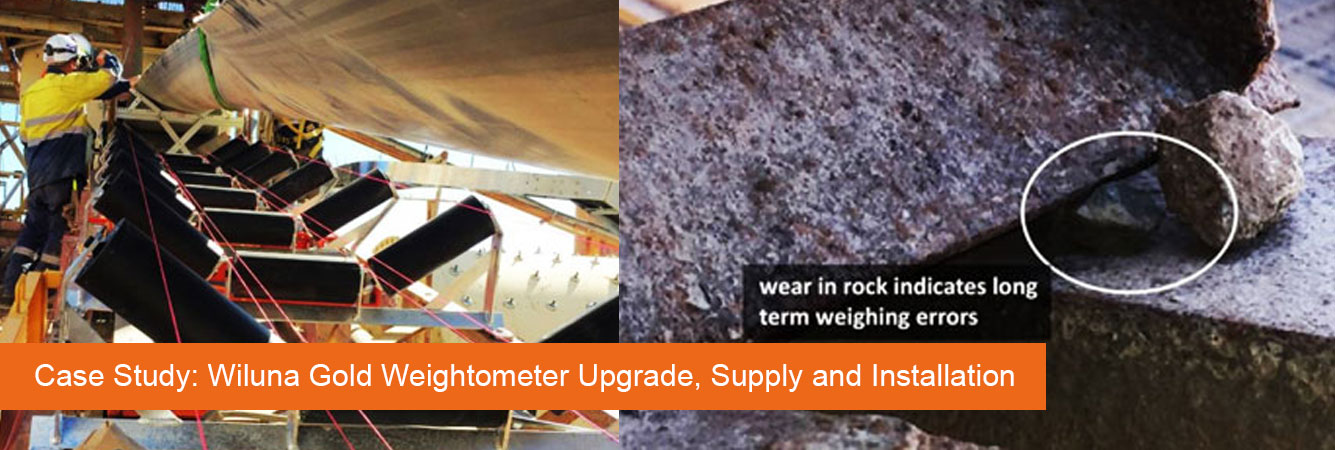View Case Study
Wiluna Gold Weightometer Upgrade, Supply and Installation
In June 2016 Instrowest visited Wiluna Gold to assist Practon Group with any instrumentation they required on their plant refurbishment. Multiple instruments were in need of replacements and multiple upgrades and new installations were also discussed. Soon after, Instrowest was asked to quote, supply, and install a range of different instruments required to improve the plant's process control and provide accurate and trustworthy monitoring for operations.
One instrument that required an upgrade was the Mill Feed Weightometer, as the currently installed weigher had reached the end of its serviceable life and other problems with the installation would also be corrected during the fitment of the new weigher. Some of the existing issues were:
![]() The weigh frame was deteriorated and at the end of its serviceable life.
The weigh frame was deteriorated and at the end of its serviceable life.![]() The weigh frame had pinch points that allow rocks to become trapped between dynamic and static parts of the installation.
The weigh frame had pinch points that allow rocks to become trapped between dynamic and static parts of the installation.![]() The spacing of the lead-in and lead-out roller frames was not consistent over the weighing area and thus impacting accuracy.
The spacing of the lead-in and lead-out roller frames was not consistent over the weighing area and thus impacting accuracy.![]() Lead-in and lead-out roller frames and the weighing frame itself were not shimmed or aligned vertically.
Lead-in and lead-out roller frames and the weighing frame itself were not shimmed or aligned vertically.![]() Rollers in the weighing area are not balanced or height adjustable
Rollers in the weighing area are not balanced or height adjustable![]() The integrator was very old and deteriorated; it was also located down at ground level making calibration co-ordination more difficult.
The integrator was very old and deteriorated; it was also located down at ground level making calibration co-ordination more difficult.
Scoping and Planning
While onsite in August, the weightometer project was scoped and planned in full, rollers and frames were measured so that they could be manufactured to suit the installation. The rollers are Australian made balanced, adjustable and fully machined steel shell, dynamically balanced to max 0.014Nm to ensure the most accurate results.
The idler frames were also measured and the weigh frame idlers were reengineered to reduce all possible catch/pinch points for dirt and debris. Pinch points like this can cause major zero errors when weightometers are not kept 100% clean.
Instrowest selected a Siemens MMI dual frame weightometer because of its reliability, reduction of pinch points, high accuracy and low initial purchase and running cost.
Installation and Calibration
During the installation Instrowest took great care to ensure that the entire weigh area was expertly aligned. Once everything was correctly installed all adjusters, bolts and threads were Denso taped to protect from corrosion and to allow easy servicing in future. This attention to detail will ensure greater accuracy and repeatability over the life of the installation.
The integrator was relocated next to the weigh frames in a stainless steel enclosure complete with a viewing window. Being located in this position allows easy viewing of process variables during maintenance and calibration.
After completing the install a calibration was performed on the weigher using Instrowest’s calibration drag chains. Correctly sized drag chains provide a higher level of accuracy than static weights and it is for this reason Instrowest utilizes these whenever possible.
Results
Since the installation and commissioning the new belt weightometer has been performing accurately and without issue, Instrowest is currently arranging the first calibration with site.
If you would like Instrowest to assist you with any weighing queries or problems please contact Instrowest.
Email: admin@instrowest.com.au
Website: www.instrowest.com.au
Join us for more updates on our Facebook page: http://www.facebook.com/Instrowest
Tags: Instrumentation, Instrument Installation, Weightometer, Belt Weighing Frame, Static Weights


 Login/Signup
Login/Signup

